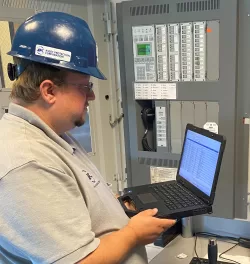As we dive into the world of digital currencies, one name that often pops up in discussions is XRP. Known for its speed and low transaction fees, XRP has carved a niche for itself in the vast ocean of cryptocurrencies. But what does the future hold for XRP? Let’s take a casual stroll through the crystal ball and explore the XRP Price Outlook for the Next 5 Years and beyond, keeping in mind the predictions for 2030 and the broader context of the cryptocurrency market.
XRP, developed by Ripple Labs, has been making waves with its real-world applications in cross-border transactions. Its utility and efficiency have caught the attention of many, but the question on everyone’s mind is: where will the price of XRP be in the next five years? To get a sense of this, we need to consider the factors that influence cryptocurrency prices, including market trends, technological advancements, and regulatory changes.
Firstly, let’s talk about market trends. The cryptocurrency market is known for its volatility, and XRP is no exception. However, as the market matures, we might see a shift towards more stable growth patterns. This stability could be a result of increased institutional investment and a better understanding of the technology behind cryptocurrencies. If this trend continues, it could positively impact the XRP price prediction for 2030.
Now, let’s consider technological advancements. Ripple Labs is continuously working on improving XRP’s underlying technology. With the potential for faster transaction times and lower fees, XRP could become an even more attractive option for both individuals and businesses. These improvements could lead to increased adoption, which in turn could drive up the price of XRP.
Regulatory changes are another factor that could significantly impact XRP’s future. As governments around the world grapple with how to regulate cryptocurrencies, any new regulations could either boost or hinder XRP’s growth. For instance, if regulations are favorable and provide clarity, it could lead to increased trust and investment in XRP. Conversely, if regulations are restrictive, it could stifle growth and affect the XRP price outlook for the next five years.
In the world of cryptocurrencies, one must also consider the competition. XRP is not alone in the market; it competes with other cryptocurrencies like Bitcoin and Ethereum. The success of these competitors could either draw attention away from XRP or push it to innovate further. The interplay between XRP and other cryptocurrencies will be crucial in shaping its price prediction for 2030.
Another aspect to consider is the global economic climate. Economic downturns or upswings can have a ripple effect on the cryptocurrency market. In times of economic uncertainty, some investors turn to cryptocurrencies as a hedge against traditional financial markets. If the global economy faces challenges, it could lead to increased interest in XRP and potentially boost its price.
Investor sentiment plays a significant role in the cryptocurrency market. Positive news about XRP, such as new partnerships or technological breakthroughs, can drive up the price. On the other hand, negative news, like security breaches or regulatory crackdowns, can have the opposite effect. Keeping an eye on investor sentiment will be key to understanding the XRP price outlook for the next five years.
When we talk about the future of XRP, we can’t ignore the potential impact of blockchain technology. As blockchain becomes more integrated into various industries, the demand for cryptocurrencies like XRP could increase. This integration could lead to new use cases for XRP, which might not only increase its adoption but also its price.
The XRP Price Prediction 2030 is a hot topic among crypto enthusiasts. Some experts predict that XRP could see significant growth due to its unique position in the market and the ongoing development of its technology. However, others caution that the cryptocurrency market is unpredictable, and any number of factors could influence XRP’s price trajectory. It’s essential to approach any price prediction with a healthy dose of skepticism and to consider a wide range of possible scenarios.
In conclusion, the XRP Price Outlook for the Next 5 Years is influenced by a multitude of factors, from market trends and technological advancements to regulatory changes and global economic conditions. While it’s impossible to predict the future with certainty, understanding these factors can help us make more informed decisions about the potential trajectory of XRP’s price. As we look ahead to the XRP price prediction for 2030, it’s clear that the cryptocurrency landscape is ever-changing, and staying informed will be crucial for anyone with a stake in XRP’s future.




